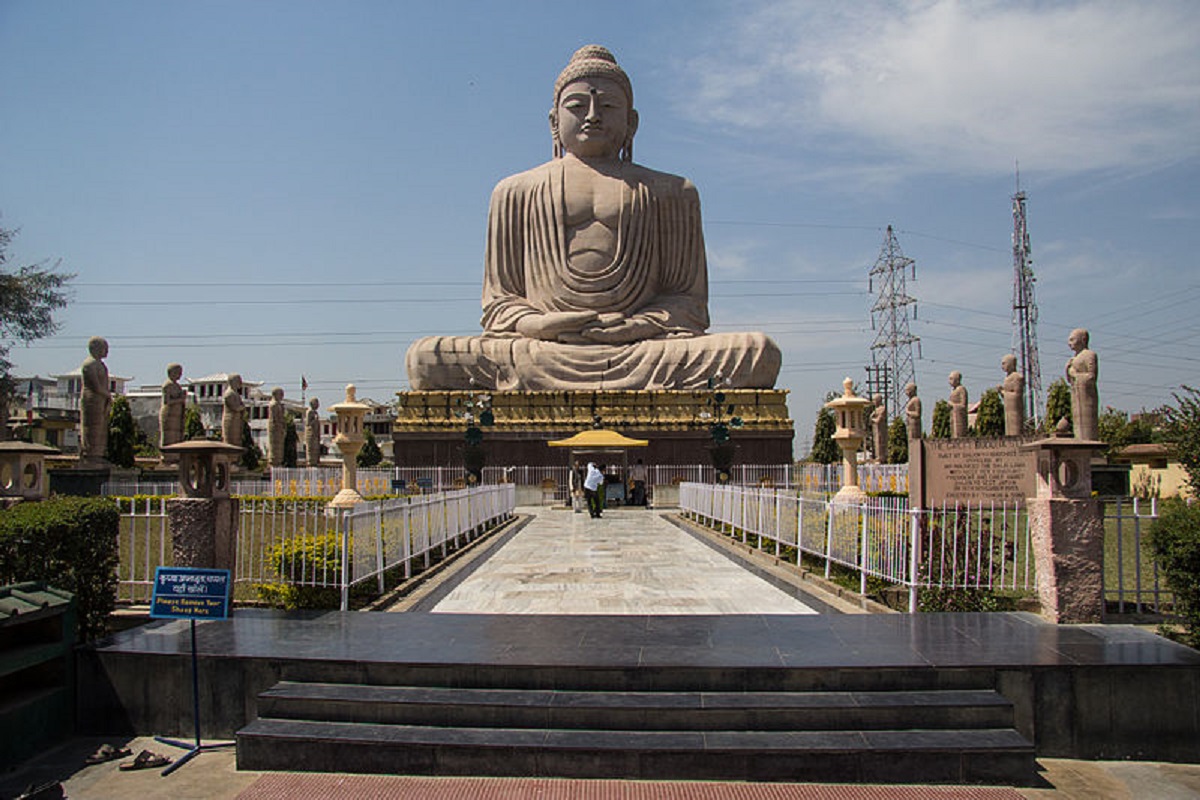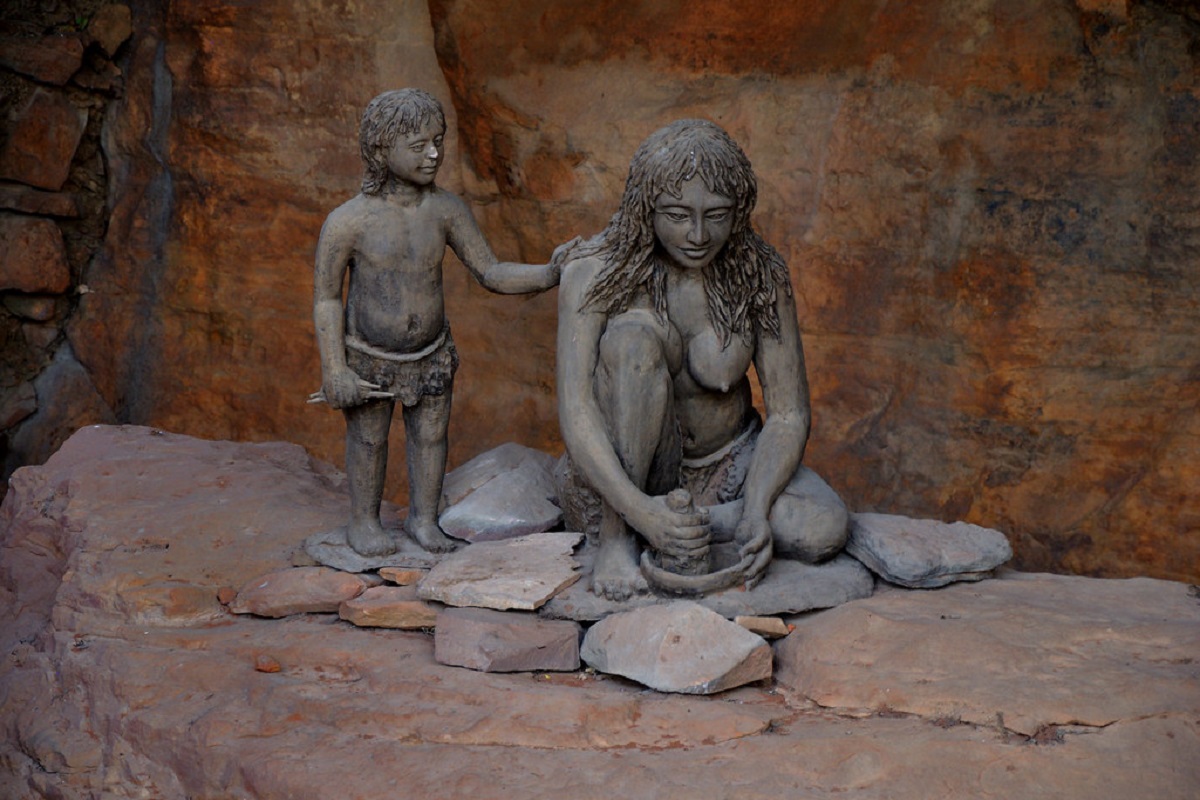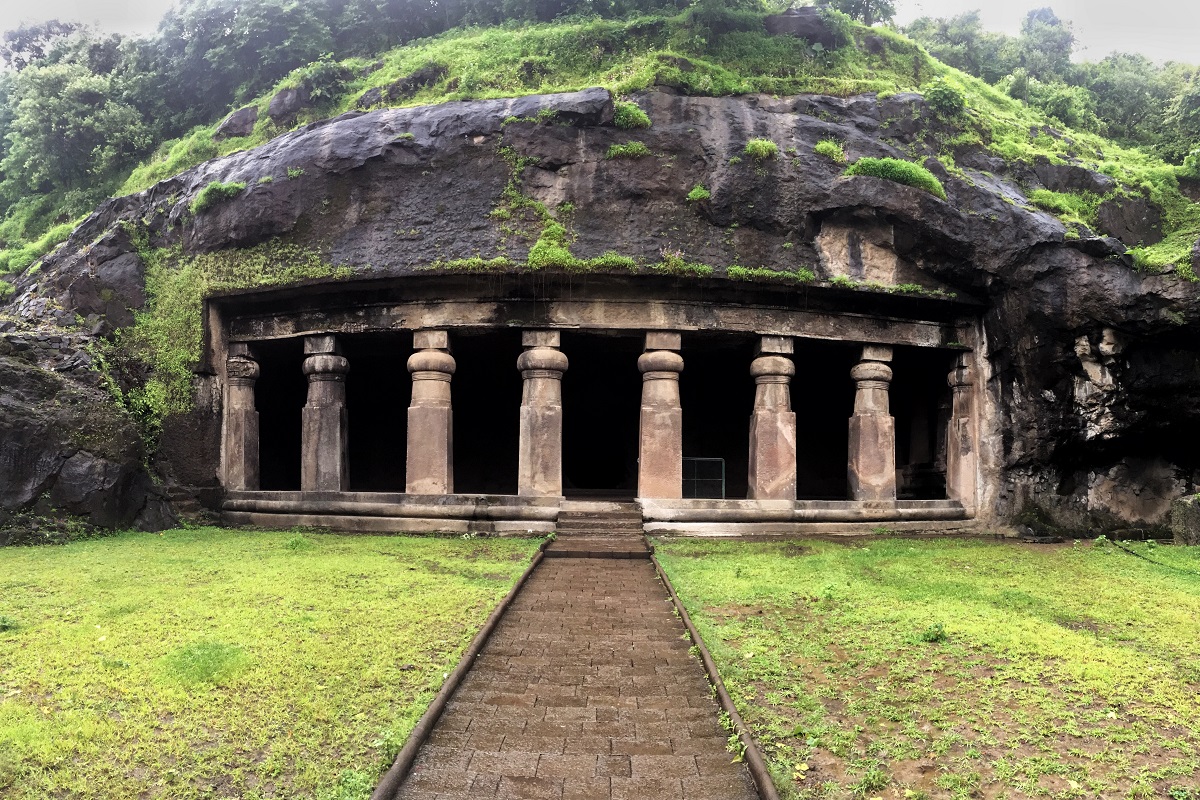In the realm of Buddhism if we have to point at the most important place of religious significance then it will be without any doubt the town of Bodh Gaya. Also referred to as Buddh Gaya this is a town is situated in the southwestern part of Bihar. Located on the west of the river Phalgu which is the tributary of Ganga, Bodh Gaya is considered to be one of the holiest places of Buddhism. This is the same place where Gautama Buddha or Prince Siddhartha attained enlightenment under the Bodhi tree and became Lord Buddha. This is one of the most important pilgrimages that have a huge significance for both Hindu as well as the Buddhists.
The Mahabodhi temple complex attracts millions of Buddhist and Hindu believers every year. In the year 2002 the Mahabodhi Temple was declared as a UNESCO World Heritage site.
Bodh Gaya Built by
Back in the 3rd Century BCE Emperor Ashoka constructed a simple shrine in the spot. In the 1st century BCE the place was enclosed by a stone railing a part of which is still to be seen. In the Kushan period the Shrine was replaced by the present Mahabodhi Temple. This happened in the 2nd century CE. Presently it is this Mahabodhi Temple which has been designated as the UNESCO World Heritage site. Historical data points out that this particular temple was refurbished further in the Pala Sena period. Once again it was heavily restored by the illustrated British archaeologist Sir Alexander Cunningham in the 19th century. Finally in the year 1882 the construction was once again restored and repaired by the Myanmar of the Burmese Buddhist. There is also a museum now near this temple which contains the relics related to the Buddhist religion. Historical records point out that the illustrated Magadh University stood very much in the place where today stands Bodh Gaya.
Bodh Gaya Temple Opening Time
The Mahabodhi Temple at Bodh Gaya is open for visitors and believers all round the week. You can visit the place anytime of the week or the weekend. The place is also open on public and national holidays. The temple opens 5 a.m. in the morning and remains open till 9 p.m. in the evening every day. Special sessions of meditation and chanting are held at 5:30 a.m. in the morning and 6 p.m. in the evening.
Mahabodhi Temple Information
The Mahabodhi temple complex is located about 110 kilometers away from Patna. This complex contains the structure of Mahabodhi Temple along with the Diamond Throne or Vajrasana and the holy Bodhi tree. It is believed that this Bodhi tree was but a sapling of the Sri Maha Bodhi tree which happens to be in Sri Lanka. About 200 years after Gautama Buddha attained enlightenment, Ashoka the celebrated Buddhist Emperor visited Bodh Gaya and created the shrine and the monastery in the holy place.
The great Buddha statue which rises well above 80 feet is another huge attraction of Bodh Gaya. In the year 1989 on 18th November this great statue of Buddha was unveiled for the entire public. Dalai Lama himself was present at this ceremony. This 80 feet Buddha statue happened to be the biggest and greatest of all Buddha statues ever to have been built in history of the nation. It is a huge attraction for the local and nationwide tourists apart from being a highly significant place of pilgrimage for the Buddhist and the Hindus alike.
Buddha Gaya Location & How to Reach
Bodh Gaya is a destination which is well connected to the other cities of India through various networks of railways, flights, roads and highways. No matter in which part of the country you live in you can always reach Bodh Gaya using any of the mentioned travel routes or even a combination of a couple of them. The nearest airport to Bodh Gaya is the Gaya airport which is about 17 kilometers away from the destination. This airport does not receive too many flights. It happens to be well connected with Kolkata by several flights. Recently the Airport has begun catering to International passengers as well. The second nearest airport to Gaya is the one in Patna. This is about 135 kilometers away from the town of Bodh Gaya. The Patna Airport is linked with cities like Ranchi, Delhi, Lucknow, Mumbai and Kolkata. The nearest railway station to Bodh Gaya is the Gaya junction which is 13 km away from the city of Bodh Gaya. The station does not receive too many trains from other cities of India. There are several taxis are waiting at the station which can be hired to come down to your desired destination of Mahabodhi Temple.
The Patna railway station is the next nearest station from Bodh Gaya city and is about 110 km away from the destination. The Patna railway station is a much bigger junction and receives trains from different cities like Hyderabad, Delhi, Mumbai, Bengaluru and Pune. There is also a bus service between the cities of Gaya and that of Bodh Gaya. The Bihar state tourism Corporation runs a massive bus service from Patna to Bodh Gaya. Apart from Patna you can also avail buses from places like Rajgir, Nalanda, Kathmandu and Varanasi to reach Bodh Gaya. You can even avail the luxury air condition buses to travel the distance. Once in Gaya you can easily hire a private cab and can come down to Bodh Gaya no time. Bodh Gaya is at a distance of 3 km by road journey from Patna.
Bodh Gaya Tourism & Entrance Fee
Being one of the most important religious places and pilgrimage destination for Hindus and Buddhists, devotees and visitors does not need to pay any entrance fee to enter the Mahabodhi temple complex. Whether you are an Indian tourist or a foreigner, everyone can enter the temple complex absolutely for free. However if you are planning to carry still camera then you will have to pay an amount of Rs. 100. For video camera you need to be an amount of Rs. 300. Apart from these charges no other entrance fee if taken from the people visiting the site.
Important Structures in bodh gaya
The Bodh Gaya complex is known for having a number of important pilgrimage places for the Buddhist and the Hindus alike. For the Buddhists Bodh Gaya happens to be the most important pilgrimage site which is related to the life of Lord Buddha. Amongst the four principal places of pilgrimage for the Buddhist – Kushinagar, Sarnath, Bodh Gaya and Lumbini, Bodh Gaya is considered to be the most important pilgrimage site for the Buddhist followers. This was the place where Prince Siddharth attained enlightenment and became Gautam Buddha – the enlightened one. The Mahabodhi Temple is the main attraction of the complex. Built by Emperor Ashoka in about 250 BCE the place encircles the Shrine and the Buddhist relics. Depictions of this Temple is also to be found in Sanchi on the toranas of Stupa one. These toranas again dates back to 25 BCE and are carvings on a relief of the Stupa railing. These representations can be dated back to the early Sungha rule.
The Bodhi tree is one of the important places you would like to visit at Bodh Gaya. It is a sacred fig tree under which Prince Siddhartha achieved his enlightenment. This tree also has a huge spiritual significance for the Buddhists and the Hindus alike. The Japanese style 80 feet high Buddha statue is yet again one of the massive attractions of Bodh Gaya. This statue of Buddha has the Lord seated in a lotus posture towers over a pleasant garden and is installed at the end of the temple. The Buddha statue emphasizes the importance of Bodh Gaya from the perspective of the Buddhist religion. Next comes the Sujatha Stupa which is situated near the Phalgu River in the village of Bakraur. The Stupa has been dedicated to Sujata who was the milkmaid and was believed to have fed Gautam Buddha rice and milk when he sat under the banyan tree. When the great Lord was completing his seven years of fasting and asceticism Sujatha fed him to her heart’s content. This Stupa was built around 2nd century BCE.
Best time to visit bodh gaya
Bodh Gaya is known for having extremely harsh summers. Hence you cannot visit the place during the summer season during the months between April to June. The best time to visit Bodh Gaya is the winter season between the months of December and February. Around this time the temperature is comparatively moderate and you can enjoy staying out doors for a long time.
History of bodh gaya
Bodh Gaya history documented in several ancient accounts and instructions of Buddhist pilgrims. The most important among these accounts are those of Faxian the Chinese pilgrim who came to India around 5th century. Xuanzang was yet another Chinese pilgrim who came to India in 7th century whose accounts are again of much importance. In ancient times the place was at the heart of the Buddhist Civilization. This is how it continued to be for several centuries before it was conquered by the Turkic armies back in the 13th century. It was around 18th century CE when the area received its current name of Bodh Gaya. Before it was known as Uruvela and Sambodhi as mentioned in rock edict number 8 created by Emperor Ashoka. The Mahabodhi Temple in the earlier times was called Bodhimanda vihara.
Attractions nearby bodh gaya
Once you are done with exploring the Bodh Gaya Complex you can also take a look at the nearby Tibetan Refugee market, the Thai monastery and the Mahabodhi temple complex book store by ardent book lovers.







